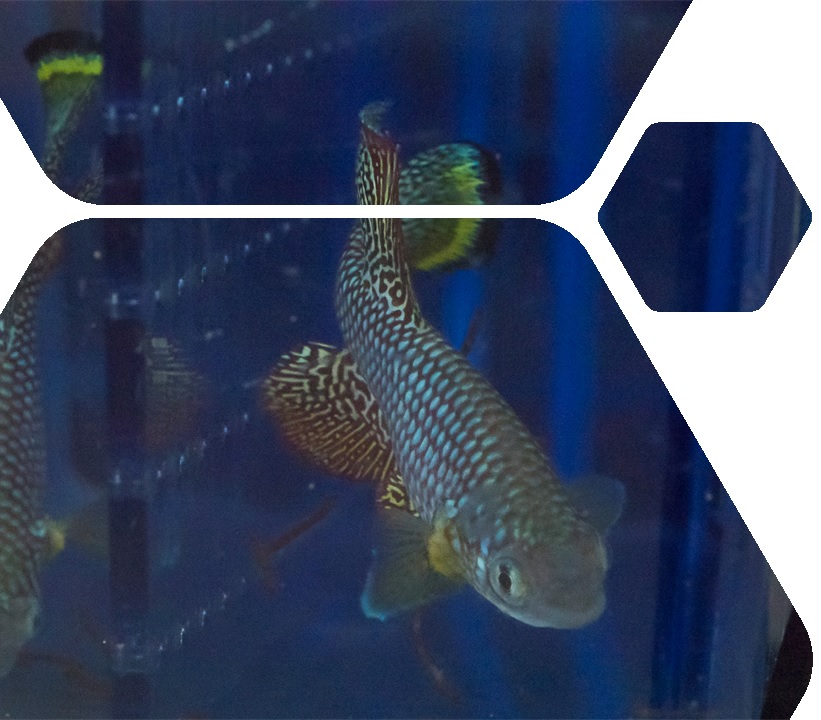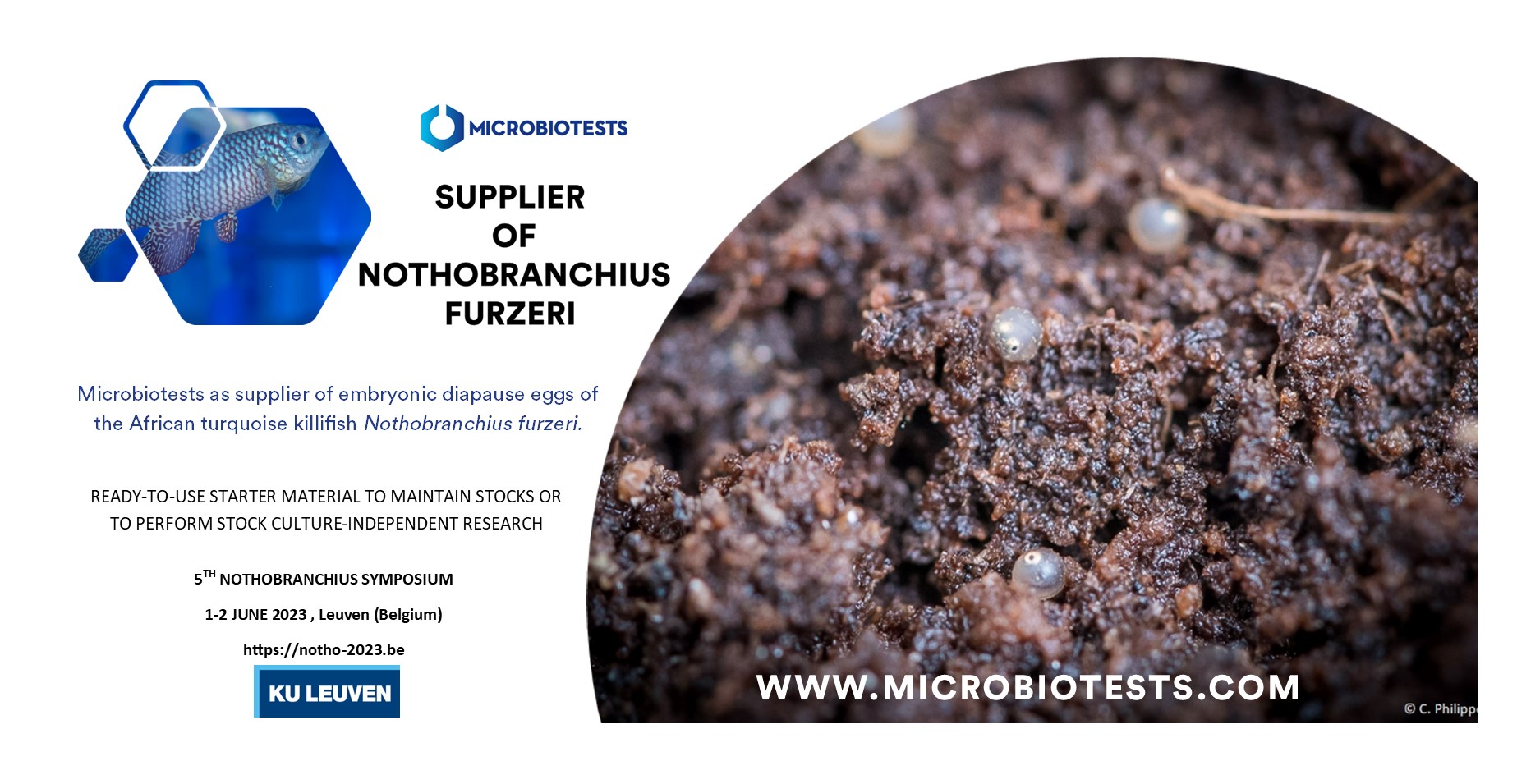African turquoise killifish nothobranchius furzeri
First collected and identified as new species in 1969, the African turquoise killifish Nothobranchius furzeri remained unnoticed to the scientific research community for decades until 2003.
Over the last years the turquoise killifish Nothobranchius furzeri, has gained significant interest as model in ageing research and as emerging model organism in genomics, regenerative medicine, developmental biology and ecotoxicology.
Nothobranchius furzeri is a naturally short-lived vertebrate that lives in ephemeral ponds in arid regions of Zimbabwe and Mozambique. The ponds are only present for 4 – 6 months during the wet season.
The fish species has likely evolved a compressed life cycle ( as short as 30 – 40 days from egg to egg-laying adult) to adapt to its transient habitat. The turquoise killifish has developed a state of embryonic diapause to survive through the dry season.
Nothobranchius furzeri is currently the shortest lived vertebrate that can be bred in captivity with a lifespan of 4 – 6 months in optimal laboratory conditions.
After years of efforts to develop protocols for breeding and rearing of standardized and diverse strains, the African turquoise killifish Nothobranchius furzeri has been transformed into a promising model organism for different scientific research domains.
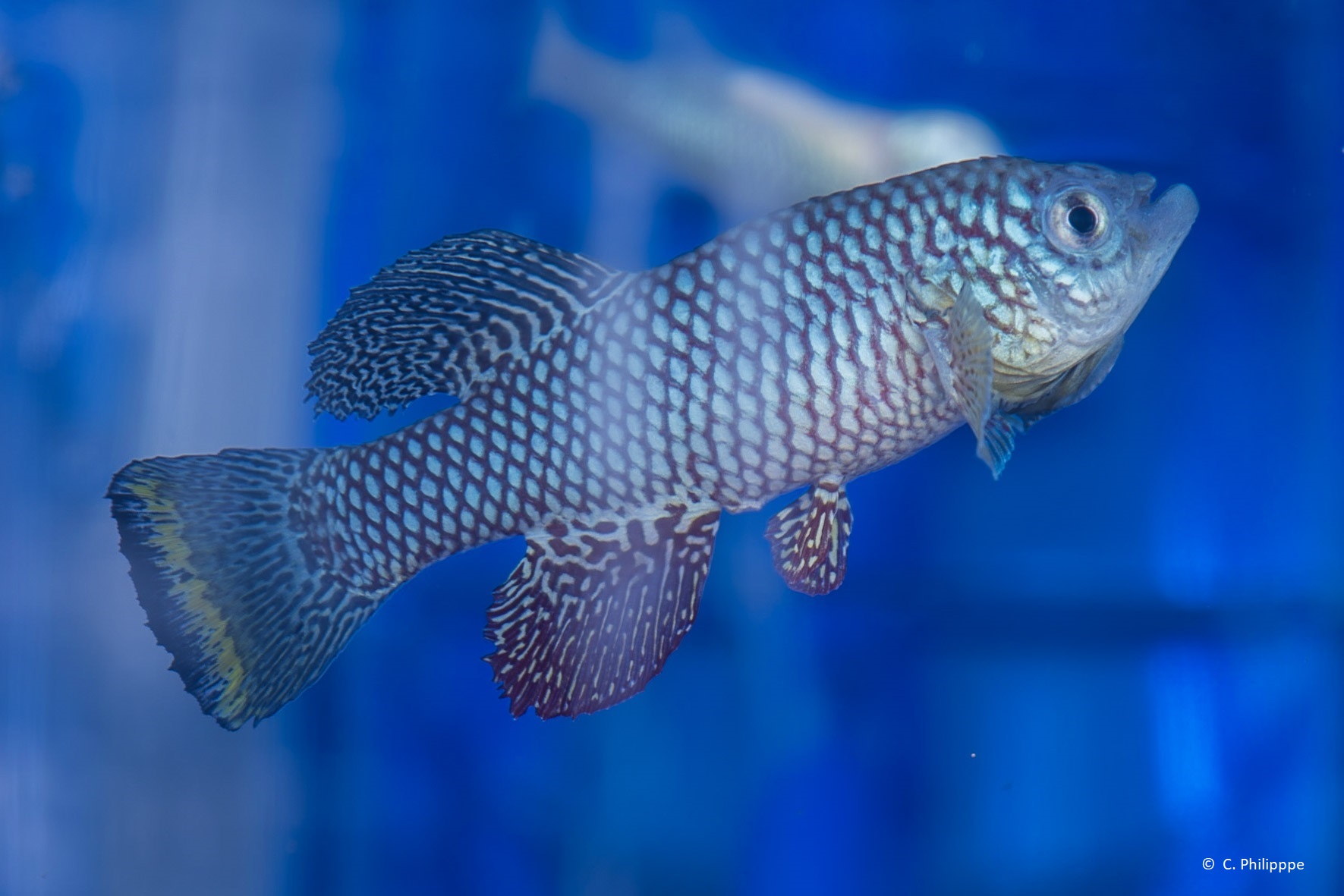
As an organism for research, a critical feature is to have a standardized strain, which helps to compare and reproduce experimental results from laboratories over at different locations and over time.
The turquoise killifish strain that is most frequently used is the GRZ strain. An inbred line that originates from a sample collected in 1970, in the Gona-Re-Zhou National Park of Zimbabwe.
Since then several collection trips to Mozambique and Zimbabwe between 2004 and 2016 assembled a set of wild strains, that vary in lifespan and possess a variable level of inbreeding, broadly used for a variety of studies.
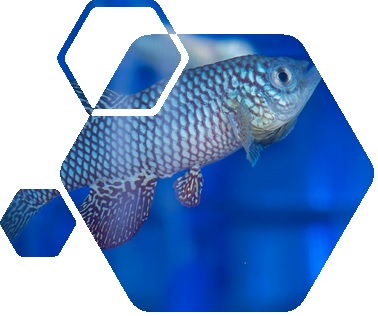
MICROBIOTESTS
Microbiotests was established in 2001, as a spin-off of the University of Gent with its core business in the manufacturing and distribution of culture-independent and standardized ecotoxicological bioassay kits, distributed under the trade name Microbiotests Toxkits.
The unique characteristic and the major asset of the Microbiotests Toxkits is that these bioassays are totally independent of the culturing and maintenance of stocks of organisms which are needed for the tests.
The Microbiotests Toxkits make use of dormant or immobilised stages of the selected test species , which can be stored for long periods of time and activated at the time of the performance of the assays.
Our expertise and long-time experience in the breeding and culturing of aquatic test biota (invertebrates, algae and higher plants) triggered our curiosity in the annual African turquoise killifish.
At the end of nineties researchers of Microbiotests already made their first attempts to optimize the breeding and rearing of another annual killifish species Nothobranchius guentheri. This killifish has also the ability to produce embryonic diapause eggs.
Microbiotests as nothobranchius supplier
Although a standardized lab protocol has already been published for the breeding and rearing of Nothobranchius furzeri the culturing of the turquoise killifish under lab conditions still is a labour intensive and expensive activity with varying success. Applying the existing husbandry protocols generally results in a highly variable quality and number of produced fish eggs for different runs.
As Microbiotests we want to offer an appropriate solution for this lack in the husbandry of Nothobranchius furzeri by acting as reliable supplier of diapause eggs of the African turquoise killifish.
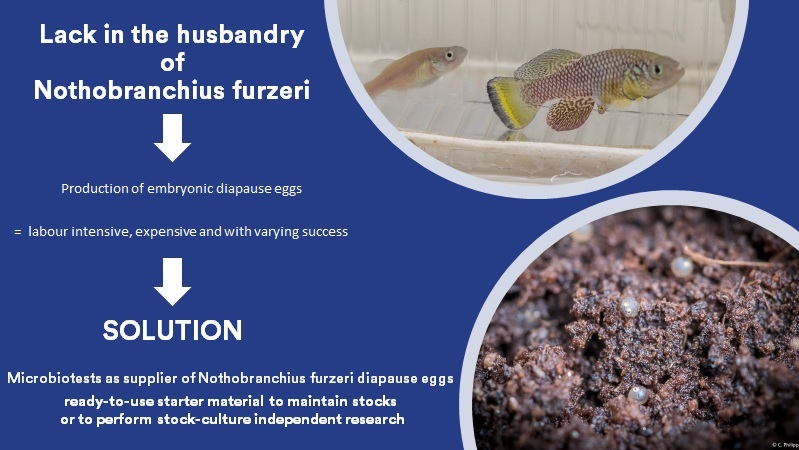
With already several years of experience in the breeding and rearing of killifish and close cooperation with the research group of Prof. Dr. Luc Brendonck of the University of Leuven, Laboratory of Aquatic Ecology, Evolution and Conservation Microbiotests succeeded to produce and maintain a large stock of high quality embryonic diapause eggs of Nothobranchius furzeri.
The professionally trained and experienced staff of Microbiotests will further improve the breeding and rearing protocols from different inbred and wild strains of Nothobranchius furzeri to maintain the ability to acquire an egg bank that can be used in different research applications.
Microbiotests aims at improving the production and worldwide distribution of high quality embryonic diapause eggs of the African turquoise killifish N. furzeri based on standardized breeding and rearing protocols.
Microbiotests laboratory housing of nothobranchius furzeri
The turquoise killifish facility of Microbiotests, in its present form, has a large capacity of adult fish which are housed in semi-closed recirculating systems under controlled conditions of temperature, light and water quality parameters.
The killifish are fed a variety of diets that provides complete nutrition for all life stages. Fry are fed exclusively rotifers (Brachionus calyciflorus) and brine shrimp (Artemia salina nauplii). Juvenile and adult fish are fed brine shrimp and frozen blood worm. Living feed can be enriched with commercial highly unsaturated fatty acid (HUFA).
The diet is aimed at maintaining excellent fish health, improving growth and preserving optimal reproductive performance.
Sexual maturity of adult fish is reached after ~4 weeks post-hatching. Mating is performed by couple or group spawning in sand boxes in killifish breeding tanks.
Besides the inbred strain GRZ, also several other strains can be maintained in these systems.
Embryo collection, bleaching and transfer to coconut fiber for long-time storage are performed according to standardized protocol.
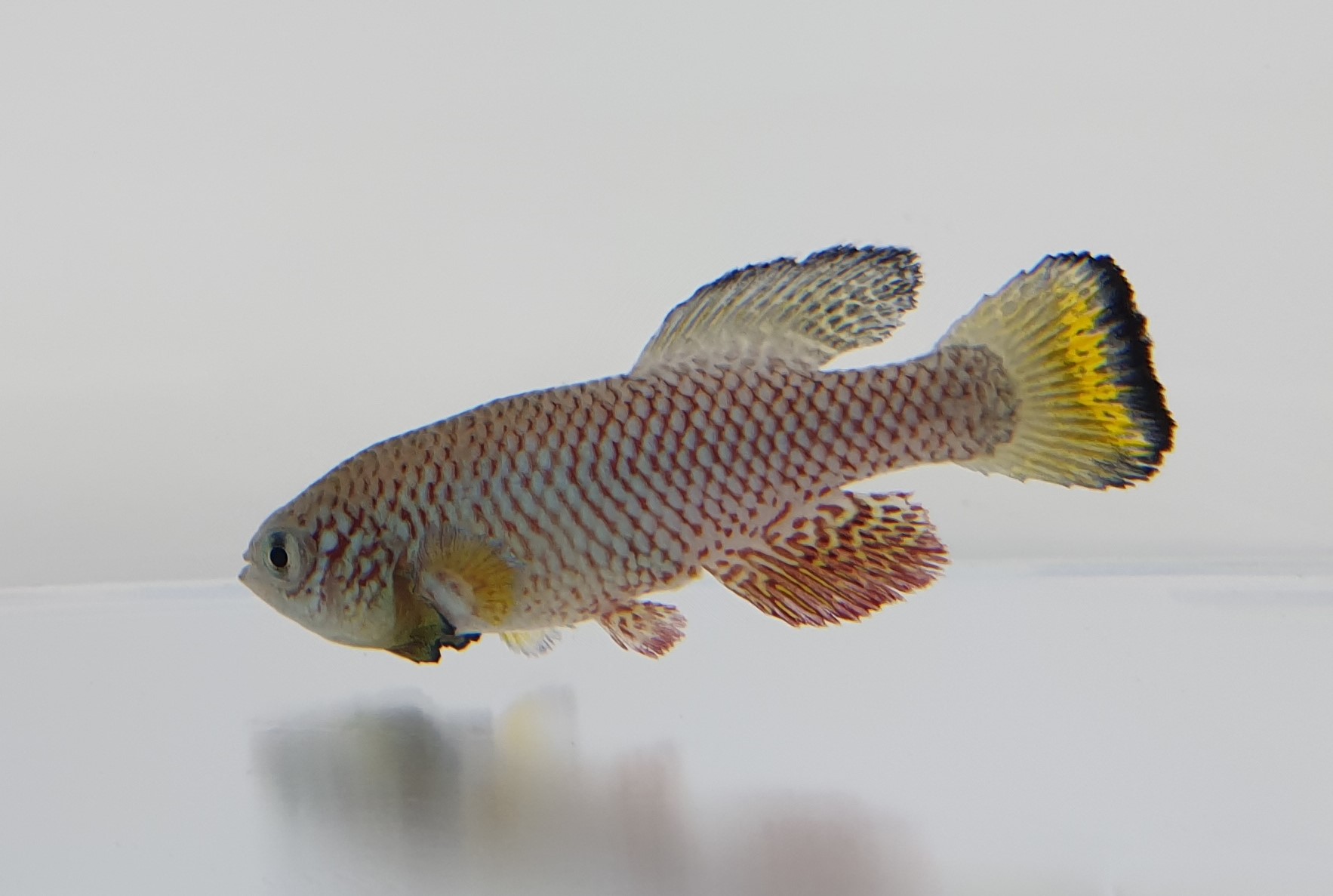
The embryonic diapause eggs are stored under optimized conditions to guarantee optimal shelf life and biological viability.
This results in high quality, reliable and cost-effective diapause eggs ready to use as starter material to maintain stocks or directly for scientific research.
Advantages of microbiotests african turquoise killifish eggs
- high quality embryonic diapause eggs
- synchronous embryonic development after 3 weeks
- synchronized and stable hatching success
- standardized biological material
- availability of homozygous inbred strain GRZ and in the nearby future other strains
- regular genetic validation of strain ID (KU Leuven, BioGenomics)
- standardized hatching protocol for optimal hatching rates
- ready-to-use material to maintain stocks
- performing stock-culture independent research
- always on stock and easy shipment
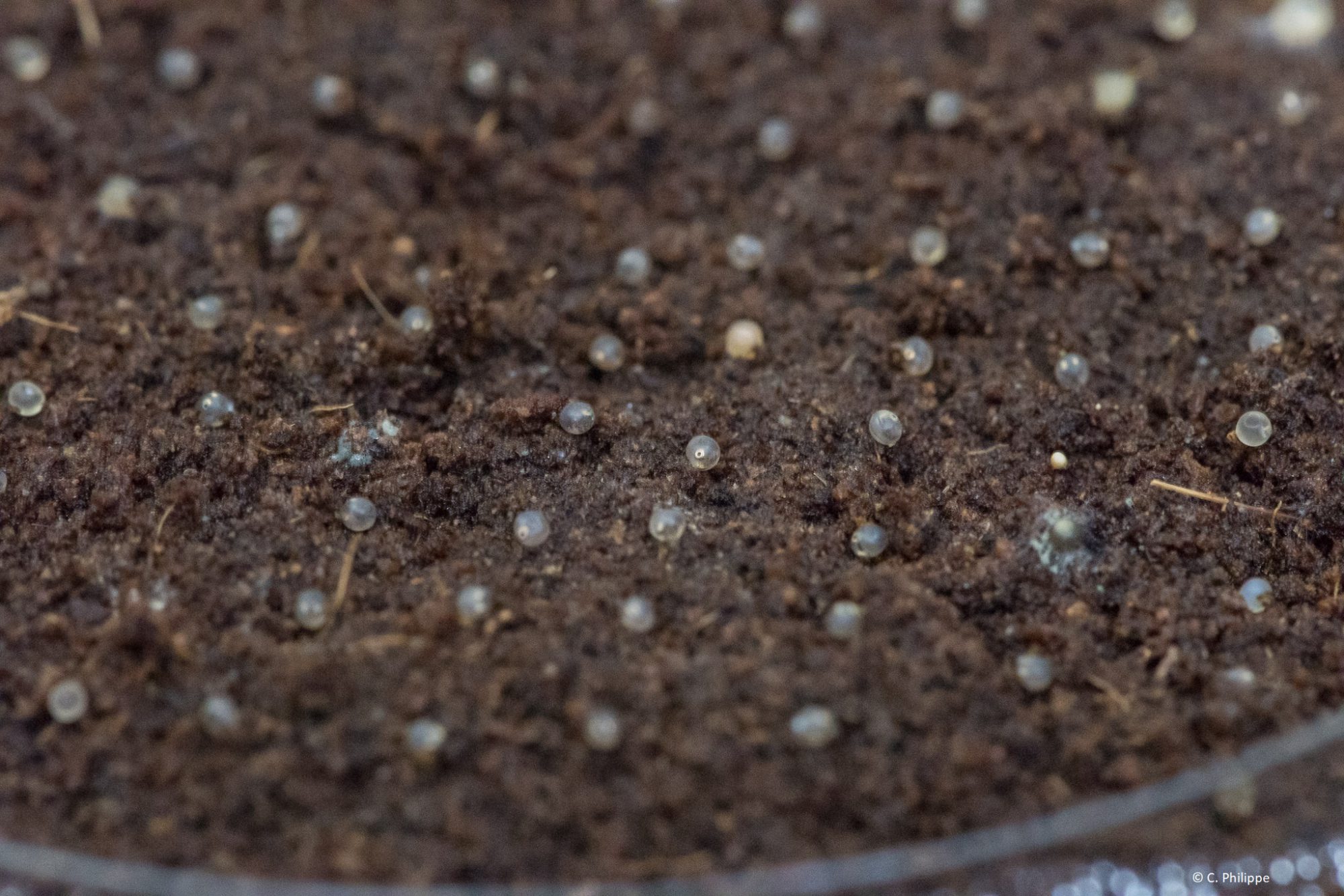
Interesting links & EVENTS
- Research group of Prof. Dr. Luc Brendonck, KU Leuven Belgium
Laboratory of Aquatic Ecology, Evolution and Conservation - NFIN – The Nothobranchius furzeri Information Network
- The African turquoise killifish conference , October 5-7, 2024 hosted by MDI Biological Laboratory, Bar Harbor, Maine (USA)


